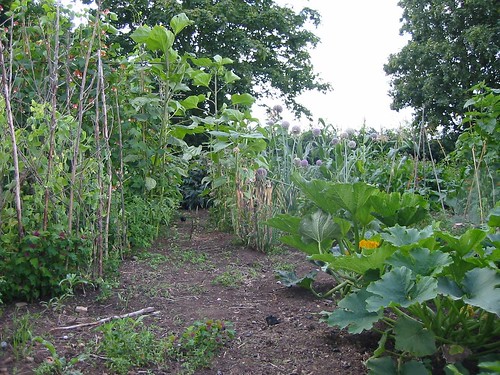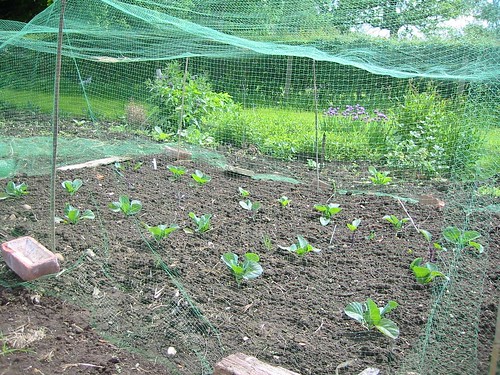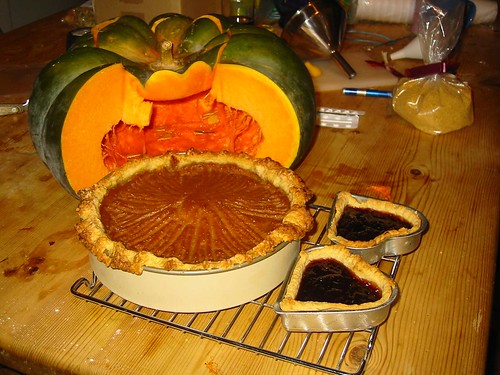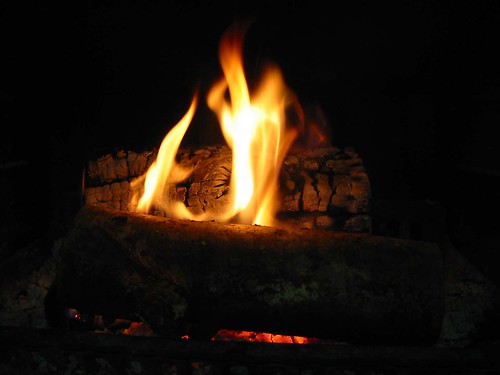After the fiasco of the deer eating my leeks (they ate my leeks!!!!) various strategies are being considered to stop similar disasters with the vegetables in future.

Vegetables in Newport Pagnell 2003
Somewhere we have a book that suggests the only certain way of keeping the beasts at bay is to shoot them regularly pour encourager les autres and it goes into quite some detail about how to arrange a successful and financially viable shooting party. Alas, that isn't going to be acceptable to us and I'm sure the deer are most relieved about it.
Obviously the usual solution of fuck off fencing is high on the list of options and there are many useful suggestions and plans in our xmas presents books like
Caring for Small Woods by Ken Broad and
Fencing: A Practical Handbook by Elizabeth Agate. We're also considering a mile long brick wall, straw bale walling and earth mound hedging but these are not going to happen in the short term or ever, frankly, being expensive or labour intensive or both and thus pretty much out of our class.
However the small back garden is already fenced adequately to keep all but the most human inured deer away (my leeks, did I say they ate my leeks?) and it would be possible to make a small veg. patch within the protected ground.
Last year I put a few pumpkins and runner beans in but the pumpkins were lost to snails (no fencing for them) and the beans, well I don't know what happened to the beans. They were old seed of my favourite variety of runner bean 'White Emergo'. They germinated and I hoped to grow them out for a new saved seed crop to last another few years but they were sulky and stunted and never really got going, setting few flowers and no seeds. A disappointment that I think can be ascribed to the poor soil quality in the newly turned lawn but might have been down to the age of the seed.
Anyway the thought that's been in my mind recently as a solution to all these problems of rampaging animals and poor soil quality is to try some Square Foot gardening. You can research this on the web and you'll find various claims for its origins but it is a really simple idea where each crop plant is given a foot square plot (or since we're europeans a 33 cms square) and the plots grouped together to make small raised beds a yard or metre square.
This has various advantages some of which are that it is possible to have varied crops in a very small area bringing vegetable gardening to people who might not previously felt they had the space for it. It is excellent for small successional cropping avoiding gluts and ensuring vegetables can be used at their prime. It's appropriate for the smaller family units that are now the norm across the country. It's on a scale that enables all physical abilities to have a go and it lends itself to organic and minimum intervention growing techniques.
It has a further benefit from my point of view which is if, as seems likely, my current depression continues throughout next summer the task of keeping a tiny bed like that tidy and functioning won't be too overwhelming. Any five minutes when the clouds lift will be sufficient for weeding and fast growing crops should keep my interest from wandering away. Of course, we'll still plant 'field' crops of potatoes, onions and beans in the larger bed I'm making to the front of the house and fence this as we can with poles from the hedges and such wire and netting as we can find.

Baby Cabbages netted to keep the butterflies away.
I did my own google on this and found this
Square Metre Garden Training Manual which gives all the basics if you'd like to have a go yourself. There are many books available too and consumer products trading on the quality of the idea. I'm going to write my plan now avoiding where ever possible commercial solutions and will do a follow up to this post in about a month's time.




